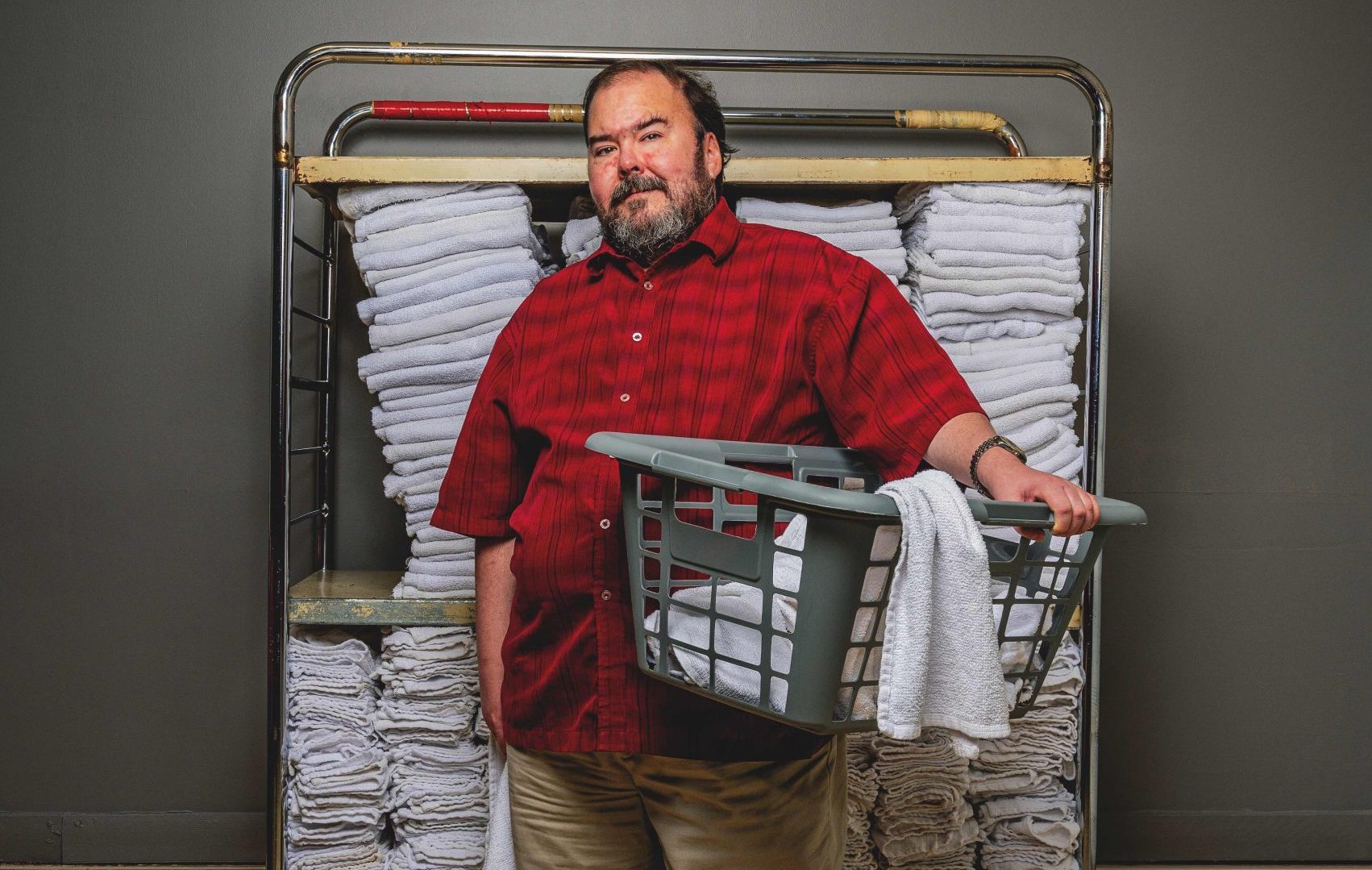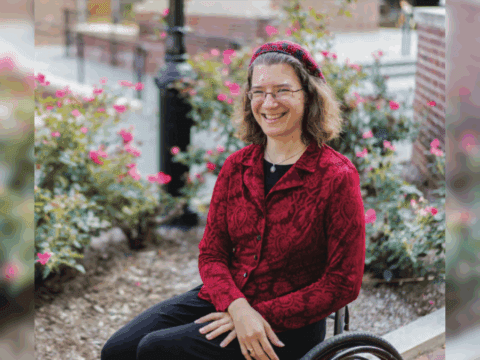For Jacob Wilkie, freedom tastes like pork chops cooked in tomato sauce and smells like the cleaners used to detail cars.
Both are things that, for now, he can only dream about as he folds towels for nearly 150 residents at Kings Regional Rehabilitation Centre, an institution for people with disabilities in Waterville, N.S. Wilkie, 45, has been one of Kings’ residents since 2018. He has Prader-Willie syndrome, a rare, non-inherited genetic condition in the brain that causes developmental delays and sometimes eating disorders. He needs occupational therapy and mental health support, which is why he lives at the centre.
You may unsubscribe from any of our newsletters at any time.
Nova Scotia is one of the last provinces where it is still common for people with disabilities to be housed in institutions. As of March 2022, 1,405 Nova Scotians lived in institutions including group homes.
Life at the centre is not all bad, Wilkie says. “There’s many things about living here that can be positive.” He plays bingo with other residents. He goes swimming. He even met his long-term partner at the centre.
But life there isn’t great, either. The aging building needs repairs. He shares a room. He would rather live with his partner in the community with the supports they need, cooking his own food, especially those tomato sauce pork chops, instead of eating another meal from the same four-week rotating menu. “I would like to have a place of my own.”
Now for the first time, his dream of independence — and the dreams of many like him — may come true. The centre is set to close in December 2027. It’s part of a five-year plan the province embarked on in 2023 to radically transform the way the government supports people with disabilities. The plan, known as “the remedy,” aims to take Nova Scotia from having one of Canada’s worst support systems for people with disabilities to perhaps the nation’s best. Calling it an ambitious target is a gross understatement.
“This is a massive change,” says Tim Stainton, emeritus director of the Canadian Institute for Inclusion and Citizenship at the University of British Columbia and co-author of the 2023 report that formed the basis of the remedy. “This is the biggest single renovation I’ve ever been aware of, of any [disability social policy] approach in the country.”
But like any renovation, it’s had delays and setbacks. Results aren’t guaranteed. Some disability advocates question whether the reforms will ever happen.
Those most affected, Nova Scotians with disabilities and their families, are keenly watching the remedy. Many say it has the potential to completely transform the province’s culture. Others contend that in its quest to make something new, the province is neglecting people’s current needs.
Always, there is hope and desire that decision-makers will heed the advice of people with disabilities. And there’s the ever-present fear they will be ignored. As Wilkie puts it, “A lot of people’s voices aren’t being heard.”
More on Broadview:
The core of the remedy is providing choice to people with disabilities. It’s about “turning the system inside out,” according to the province’s first progress report, published in May 2024. The old system focused on proving disability and then slotting people into a predetermined box of supports. The new one helps people build the life they want in the community where they want to live.
“Traditionally, it was just like you have a menu of choices,” says Thivjan Tharmaratnam, executive director of Inclusion Nova Scotia, which works with people with intellectual disabilities. “This is going beyond a menu to say, ‘Hey, this whole world is your buffet. You can go do what you want.’”
Historically, the prescribed option in Nova Scotia was for parents to move children with disabilities to institutions, like the rehabilitation centre where Wilkie lives, or enrol them in day programs with other disabled adults when they finished high school. This system was built on the idea that people with disabilities couldn’t live on their own or participate in society. In 2021, the Nova Scotia Court of Appeal upended that view, saying that the province had systematically discriminated against people with disabilities by failing to give them what they needed to live in their communities.
That’s what prompted the remedy.
A big part of the plan is to shutter all institutions for people with disabilities that house more than four people. That includes moving disabled adults who are not seniors out of long-term care homes and bringing those who are in hospitals, but medically fit to leave them, into the community. In addition, the remedy sets out how to make services available where people live so they don’t have to move to get the support they need. It creates what is known as “individualized funding.” In this model, governments give money directly to people to use as best fits their needs. The amount of money each person gets may differ.
This could change what services people can use. For example, right now the government directly funds organizations that run services such as day programs. Under the new model, that money would go directly to people, who would then decide if they want to use it on day programs or spend it elsewhere.
Nova Scotia already has a few smaller disability programs that use an individualized funding approach. But the remedy would make such funding the default and not the exception.
These are new ideas for Nova Scotia, but none of them are original. “When we designed it, we took the best of what was happening around the world and then tried to mould that to work in Nova Scotia,” says Stainton, the UBC professor who designed the remedy alongside Eddie Bartnik, an Australian expert in disability services.
Nova Scotia had known for decades that its system for supporting people with disabilities was riddled with problems. Reports in 2001 and 2013 detailed the issues. The 2013 report decried the province’s “fragmented” disability supports, noting they are “often unavailable or unaffordable, not portable across life transitions or locations, and all too often disempowering or stigmatizing to those seeking a modicum of assistance to live in dignity and to be active citizens.” To fix this, the report recommended the government create an individualized funding program.
The 2013 report also recommended implementing a multi-year plan to close institutions. It said people have a greater quality of life when they are supported to live in the community. The model of institutionalization, it said, “has been unequivocally rejected by persons with disabilities.”
It’s unclear why the government didn’t act on the reports at the time. Stainton wonders if the very system of institutionalization in Nova Scotia hindered momentum for change. In contrast to provinces whose largest institutions have housed, at times, thousands of people, Nova Scotia’s institutions were “fairly unique” because they were smaller and more closely connected to municipalities, he says. This does not mean placing people into those small institutions was a good policy, says Stainton, but it “may have dampened” political will to close them.
Want to read more from Broadview? Consider subscribing to one of our newsletters.
Ultimately, a long-running human rights complaint — and a court order — forced the government into action. In 2014, three people with intellectual disabilities, Beth MacLean, Sheila Livingstone and Joseph Delaney, launched a human rights complaint saying the province had failed to provide them with proper housing because of their disabilities. All three had lived in institutions throughout their lives and eventually were moved to Emerald Hall, a locked psychiatric ward at Nova Scotia Hospital in Dartmouth. Medical staff said they were all capable of living in the community in “small options homes.” These homes provide support for three or four people with intellectual disabilities in residential neighbourhoods.
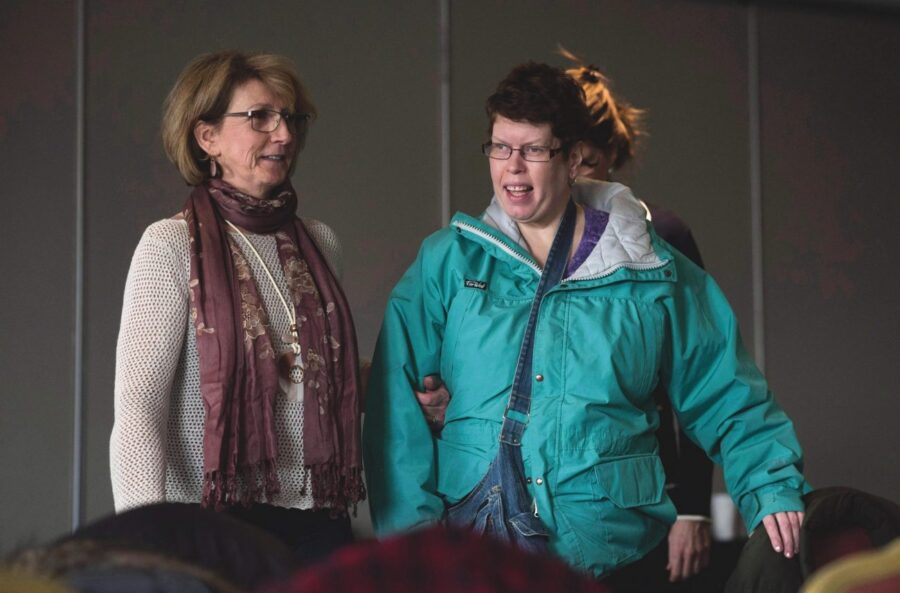
MacLean was moved to Emerald Hall in 2007. She was still there in 2014 when she filed the complaint. Livingstone lived at Emerald Hall for nine years while waiting for placement in a community and was eventually moved to another institution. Delaney was admitted to Emerald Hall in January 2010 and told he could be medically discharged in July, except there was no bed available for him in a small options home. In 2015, he moved to another facility, returning to Emerald Hall in 2017.
The Disability Rights Coalition of Nova Scotia, an advocacy organization, joined the complaint, saying the province hadn’t provided “adequate, supportive, community-based housing for people with disabilities.” Instead, people with disabilities were put on long waitlists for services or forced into institutions, hospitals or long-term care facilities, the coalition said.
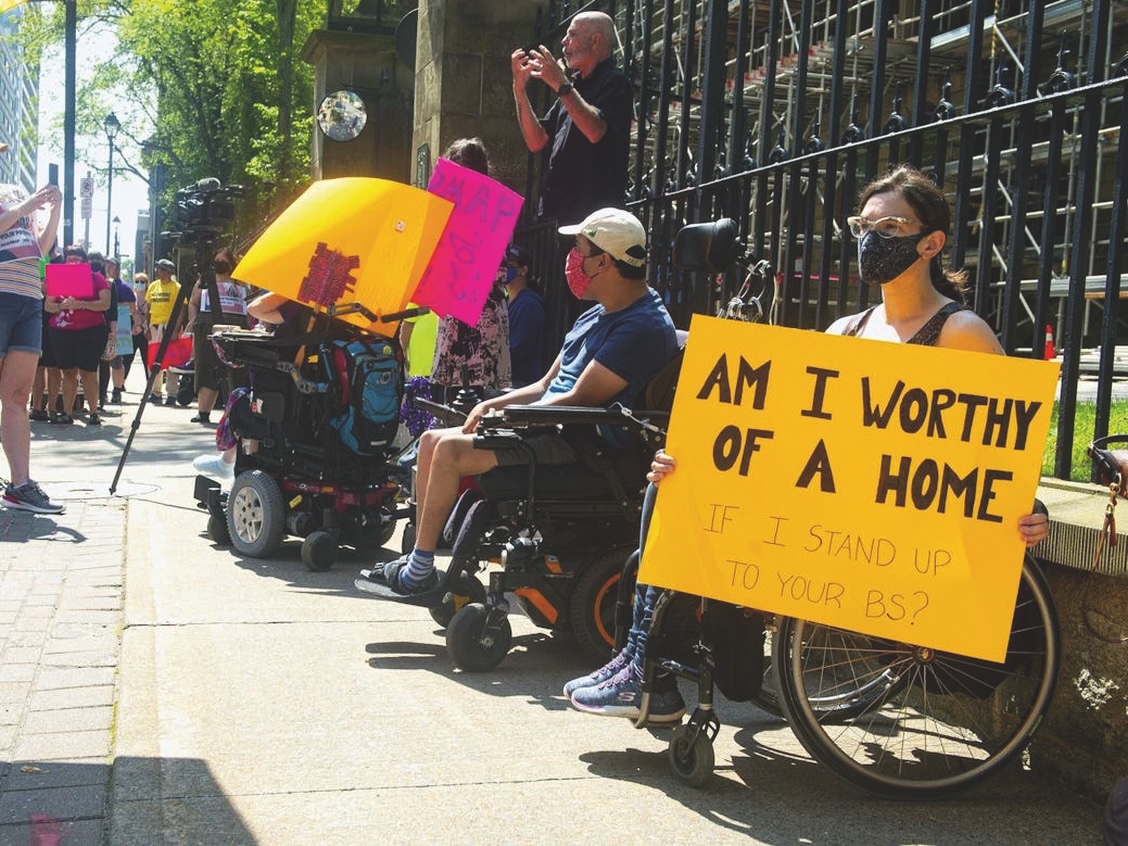
In 2019, a Human Rights Board of Inquiry decision upheld the individual human rights complaints but denied that any systemic discrimination had occurred. Both sides appealed. The coalition said the province had discriminated systemically; the province said it hadn’t discriminated at all.
In 2021, Nova Scotia’s highest court upheld the entire complaint, finding individual and systemic discrimination. The province tried to appeal the case to the Supreme Court of Canada, but the country’s top court wouldn’t hear the case.
Livingstone died before the 2019 decision; MacLean shortly before the one in 2021.
***
For Stephanie Carver, in Halifax, raising a child with disabilities while the government implements the remedy is both terrifying and exhilarating. Some days, it’s hard for her to tell which emotion dominates.
Carver’s youngest son, 22-year-old Peter Greenlaw, is among the first generation of adults with disabilities to come of age during the remedy’s rollout. Peter has autism, an intellectual disability and a communication disorder and needs help with household chores and tasks like budgeting.
For people with disabilities, reaching age 21 is like “going off a cliff,” Carver says, because they’re no longer allowed to attend high school. After that, the lack of supports around the usual options of work or further education makes it especially difficult for them. Another common rite of passage for young adults, moving out of the family home, is also much harder for people with disabilities unless they have supports. Some parents of disabled children feel that the government’s immediate priority is helping residents of institutions move into the community, not helping families whose children were never institutionalized find support.
Sending Peter to an institution was never an option for Carver. Instead, she designed a customized program for her son, with input from immediate family and trusted friends. He has support for about six days a week, but scheduling the six staff who come to their home is like “human Tetris,” Carver says. Two mornings a week, Peter attends a government-funded day program. Carver has misgivings about day programs in general; she feels they are a daytime form of institutions. But the program includes employment preparation, which gives Carver hope that her son will one day find a job where he can interact with both disabled and non-disabled people.
Her eventual goal is for Peter to live in his own home, likely with others, but not with his parents. The remedy is giving her plan a boost. “[It] is really going to be a game-changer for my family and families like mine,” she says. Direct funding will allow her family to access the services that are best for Peter, rather than rely solely on what day programs offer.
Every morning, Carver argues with herself, questioning if she is doing enough, if Peter’s volunteer and recreational activities are the right fit, if he’ll befriend peers his age in settings not defined by disability. “I’m kind of hard on myself,” Carver, a newly retired teacher, tells me. “I want everything to be perfect right now.”
In the future, she expects more families will create similar customized support systems for their disabled children. But for now, Nova Scotian families like Carver’s are hard to find. She feels lonely and sometimes wonders if fellow parents of disabled children, fatigued by the system, have a bottle of wine chilling in the fridge, ready to pour her a glass when the plan fails. She pictures them listening to her sob while they sip wine, thinking, “I told you so.”
“I don’t really have another point of reference for the messiness of it,” she says. “It’s totally, totally messy. It’s not perfect.”
***
Unknowns abound. Change is slow. Many policies to enact the remedy still need to be made. It’s hard to know exactly how the remedy will change things. Policies to create individualized funding were implemented early in 2025, but families don’t know how much money it will provide. The government also missed its first deadline for developing a policy to stop admissions to institutions — a deep disappointment for some disability advocates. By March 2024, 758 people were living in large institutions. By the end of 2024, the government had announced timelines for the closure of each institution.
Others call such snags inevitable and point to the fact that an independent reviewer is keeping an eye on progress. He is Michael Prince, a University of Victoria professor who specializes in disability policy. He says implementing the remedy is complex. The government is “trying to maintain services while changing [them] at the same time and reassuring people not to freak out about the change,” he explains.
Some families worry that the remedy will reduce funding for programs that are working well. “Do we really need to dismantle everything, or does government need to look at what’s there and how they can do it better?” asks Halifax resident Anne Louise Desrosiers.
Desrosiers’ son, Luc, 26, has Williams syndrome, a genetic condition that causes developmental disabilities and cardiovascular problems. Luc needs one-on-one support to prepare meals and help with hygiene. For years, he’s attended a day program several days a week. He likes it. He has friends. Often, his family hires one-on-one support workers who take him to sporting events and other community activities. It’s a carefully crafted solution that keeps Luc in the community. But what if the remedy results in the closure of his day program? That would mean greater isolation, not increased inclusion. “Just getting rid of institutions is not going to make everything better,” Desrosiers says.
Maria Medioli, who is leading the transformation as executive director of Nova Scotia’s Disability Support Program, says no decisions have been made about day programs. “We haven’t landed on the final funding model specific to day programs, but we would certainly find a way to work together,” she said in August.
For Carver, inclusion will only be successful if societal attitudes about people with disabilities change. That may take longer than the remedy’s five-year implementation plan. “[Peter] could have all the individualized funding in the world, and it would mean nothing if the community that we live in wasn’t open and ready and understanding and prepared to shift to welcome him,” she says.
She wants Peter to develop relationships with people who meet him in their community: volunteering at the thrift store or library, working out at the gym. “That’s going to take a huge culture shift in Nova Scotia, which I don’t think is impossible. But everybody else out there in our community needs to believe that Peter belongs there. I know he does. I know for a fact that he does.”
***
It could be years before the remedy is complete, and generations before Nova Scotians appreciate its benefits.
For Leta Jarvis, the most important piece of the remedy has already happened. Jarvis has been working for years to get her brother, Paul Cluney, 70, and his fiancée, Maryann Preeper, 45, out of Kings Regional Rehabilitation Centre. She would phone them each day, reminding her brother to eat, encouraging them both that one day they will come out of the centre. Sometimes, they would visit her. Other times, she would get someone to drive her the two hours to visit them.
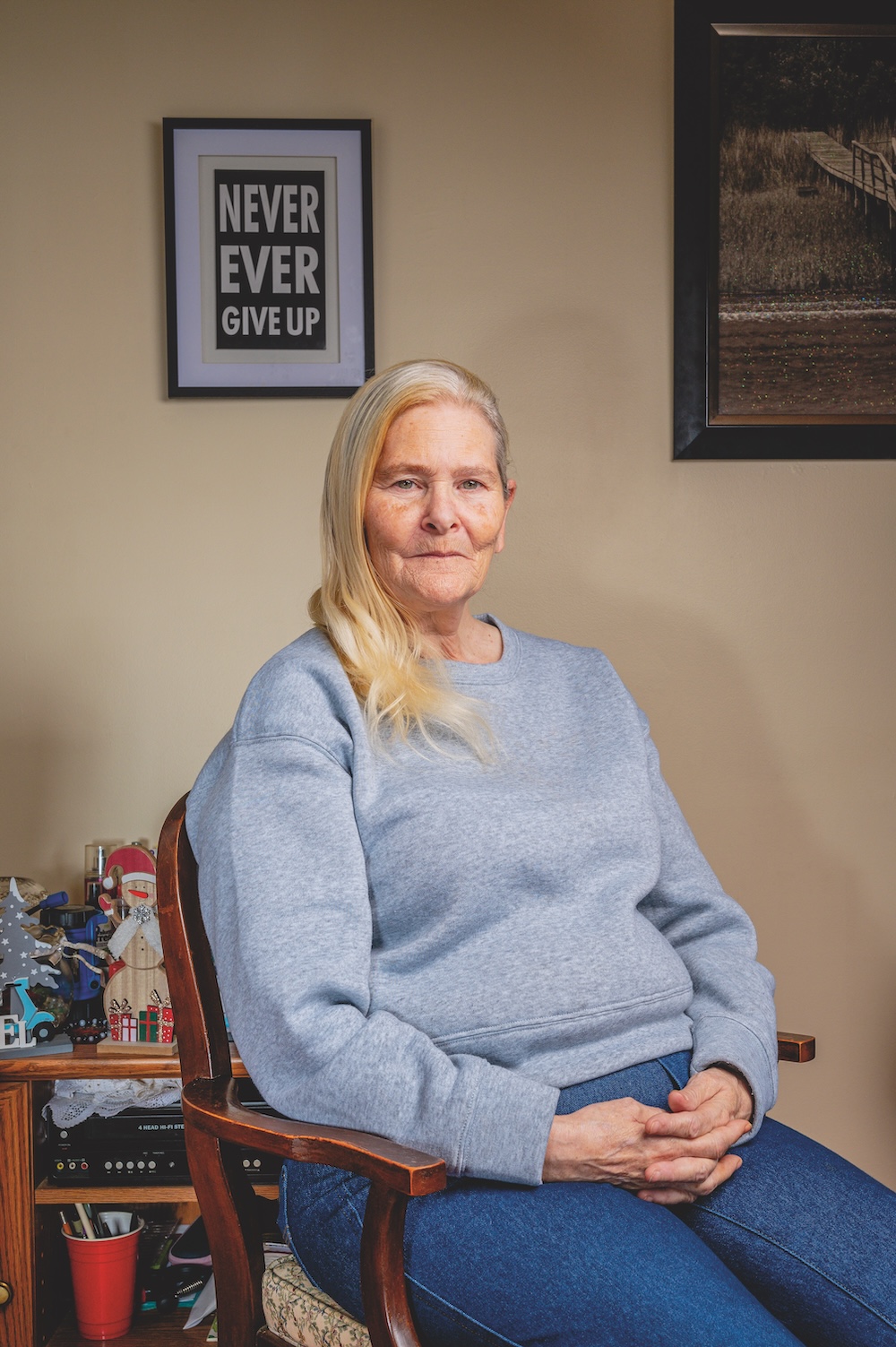
Last fall, Jarvis learned that they would be moving out of the centre and into an apartment in Truro, where she lives, in spring 2025. “I was really excited,” she said in early December. “I didn’t think it would be that fast, but it was.” She thinks the remedy helped.
Jarvis has plans. She wants to host the couple for dinner. She wants to take them to parties, to bingo, to parades. Eventually, she wants to plan their wedding. But for right now, she’s debating what housewarming gift to buy — dishes, maybe, or bedsheets and pillowcases. They don’t have a lot. Cluney has been institutionalized for nearly 40 years; she wants to give them something useful.
Her optimism is tempered. Her brother will need a lot of support, especially as he gets older. Jarvis, who also has disabilities, knows the challenges of adjusting to life outside institutions. She herself struggled when she left the last institution she lived in and wound up homeless and addicted to alcohol. “I was a very hateful woman,” she recalls.
Eventually, Jarvis got connected with People First Nova Scotia, an advocacy organization made up of people with intellectual disabilities. It helped her find places to live. Friends later helped her find the apartment she’s been in for nine years and shares with a dog. She’s decorated it with pictures, many her own paintings of horses and dogs. Colouring books and AA meetings: that’s what helps her cope with the memories of institutionalization she wishes she could lock away. The art also helps her move forward, fight her addiction and help others with disabilities live in the community.
One wall decoration says, “Never give up.” Jarvis may read the sentence in the privacy of her apartment, but it’s a motto that echoes through the work of advocates and families who have come before her and who will come after. The work of inclusion began long before the remedy was issued and will continue long after 2028, when the five-year implementation is set to conclude. But any gains that happen will not be because of the remedy itself, but because of the determination of the people who made it possible.
***
Meagan Gillmore is a journalist in Ottawa.
This article first appeared in Broadview’s April/May 2025 issue with the title “The Remedy.”

